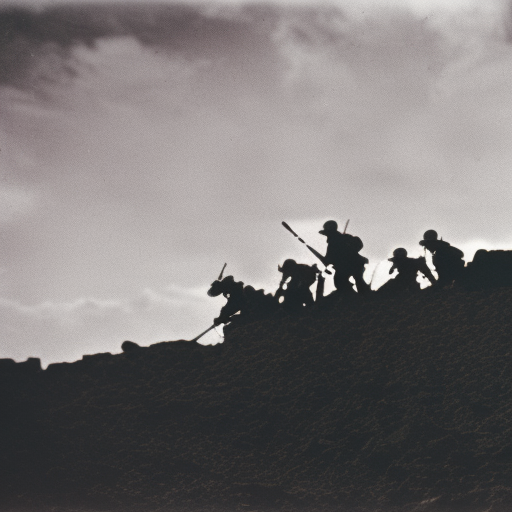Battle of Iwo Jima: A Pivotal Moment in World War II
The Battle of Iwo Jima was a significant military engagement that took place during World War II. It occurred from February 19 to March 26, 1945, on the Japanese island of Iwo Jima. The battle was fought between the United States and Japan and was a crucial turning point in the Pacific theater of the war.
Background: Iwo Jima, a small volcanic island located halfway between Japan and the Mariana Islands, was strategically important for both the United States and Japan. The Japanese had heavily fortified the island, constructing an intricate network of tunnels, bunkers, and underground facilities. They believed that the island’s defense would serve as a deterrent to the American forces and provide them with a base for launching counterattacks.
The American Plan: The United States recognized the significance of Iwo Jima as a potential base for launching air attacks on the Japanese mainland. Consequently, they devised a plan to capture the island and neutralize the Japanese defenses. The operation, codenamed Operation Detachment, involved the deployment of three Marine divisions, totaling over 70,000 troops.
The Battle Begins: On February 19, 1945, the American forces launched their assault on Iwo Jima. The initial phase of the battle involved intense naval and aerial bombardment of the island. However, the Japanese had constructed their defenses in such a way that they could withstand the heavy bombardment. As a result, the American forces faced fierce resistance as they landed on the island’s beaches.
Ferocious Fighting: The battle quickly turned into a brutal and protracted struggle. The Japanese defenders, deeply entrenched in their fortified positions, fought tenaciously. The American troops faced numerous challenges, including the difficult terrain, a lack of cover, and the constant threat of Japanese snipers and artillery fire. The fighting was characterized by close-quarters combat, with both sides sustaining heavy casualties.
Raising the Flag: One of the most iconic moments of the battle occurred on February 23, 1945, when six Marines raised the American flag on Mount Suribachi, the highest point on the island. The photograph of this event, taken by Joe Rosenthal, became one of the most famous images of World War II and symbolized the American determination and sacrifice in the battle.
Victory and Aftermath: After weeks of intense fighting, the American forces emerged victorious. However, the battle had taken a heavy toll on both sides. Of the approximately 21,000 Japanese defenders, only a few hundred were taken prisoner, while the rest were killed in action. The American casualties numbered over 26,000, with nearly 7,000 Marines losing their lives.
Significance: The Battle of Iwo Jima had significant implications for the outcome of World War II. The capture of the island provided the United States with a vital base for launching air attacks on Japan. It also served as an emergency landing site for damaged American bombers returning from missions over Japan. Furthermore, the battle demonstrated the Japanese resolve to fight to the death, foreshadowing the intensity of the upcoming battles in the Pacific.
In conclusion, the Battle of Iwo Jima was a pivotal moment in World War II. The fierce fighting and high casualties on both sides underscored the determination and sacrifice exhibited by the American and Japanese forces. The capture of Iwo Jima provided the United States with a crucial base for launching further attacks on Japan and marked a significant step towards the ultimate Allied victory in the Pacific theater.












